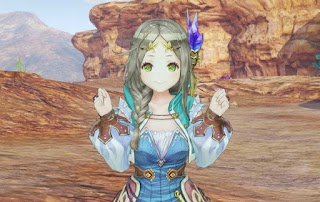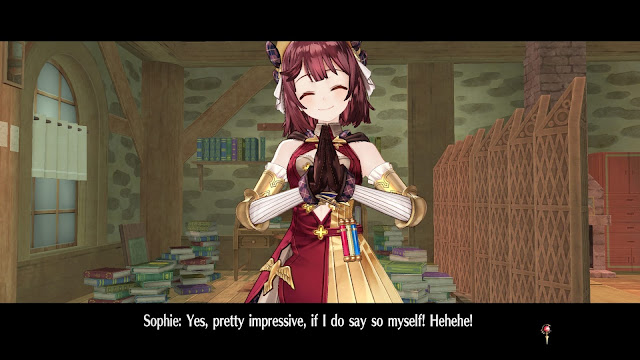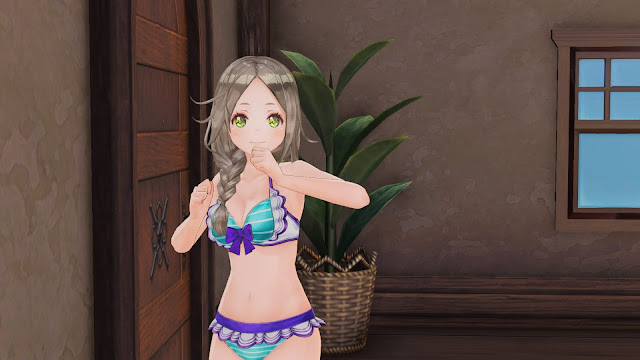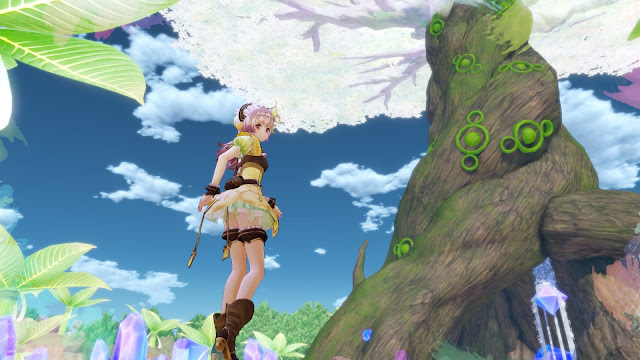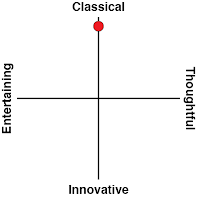Look, I’ll level with you here: There’s not much I have to say about the three titles in the Atelier Mysterious Trilogy that I haven’t already in my reviews of their original releases, so for the bulk of this review I’ll be copying some sections from those reviews, with links so you can check them out for more in-depth information. The same broad thoughts that I had for each of those original releases apply to the Nintendo Switch releases here. With that being said, of course I do love having all three titles available on my Switch for play on the go. Especially Firis. I love Firis so much.
Indeed, all three games come with little bonus features that help elevate the experience beyond the base game. Only slightly, perhaps, but enough. All three games now have photo modes, which is great for Firis in her bikini capturing your favourite moments on the adventure. Each title also has speed controls, so you can power through battles to ease the grind if you’d like. Perhaps most importantly, you also get a digital artbook for each game, each a couple of dozen pages long, that shows off the gorgeous art that is such a hallmark of the series. I highlight those art books in the video below.
Two of the trilogy were not previously available on Switch (Sophie and Firis), and both run fine on the console, so that’s another win, since it bumps the Switch up to a library of no fewer than thirteen games in the series. Now, before Atelier Ryza bumped up the budgets and production values of the Atelier series (to great commercial success), Gust was working with very modest resources indeed, so players coming to these titles new might find their more raw elements to be a bit of a shock at first (especially Firis, which aimed for an open adventure and the engine just wasn’t able to deliver the vision sometimes). Nonetheless, the vision and charm behind each game is in abundance, and what the Atelier series typically does well (wonderful characterisation, bright, cheerful aesthetics and clean alchemy and turn-based combat systems) all apply to all three games here.
Finally, Gust has added some minor features to make each game the complete edition. Atelier Sophie offers three new cauldrons that can change up the alchemy system, as well as most of the game’s DLC and a new bonus costume. Firis, meanwhile, gets access to four new vehicles to travel around that “open” world, as well as seven all-new monster quests (with a particularly powerful boss battle at the end). Firis DX also includes most of the DLC previously released, including two new characters and sixteen costumes (including a school uniform for Firis, which is just the most adorable thing). Lydie & Suelle, finally, get an all-new level to explore based on another Atelier title, Nelke & the Legendary Alchemists. And more playable characters, new costumes, and other bits of DLC previously released.
All of the above highlights just how much content is available in this collection, and the consistency of the quality of it is excellent.
As for the individual titles:
Atelier Sophie (read my full review here)
Atelier appeals to me because Gust manages to craft such beautiful, pastoral, communal worlds. Towns and villages are places where people work together for mutual benefit, and it’s rare that a character has the slightest intention on doing anyone else harm, or exploiting them to uneven gain. With so many JRPGs being aspirational in nature, focusing on personal achievements, the accumulation of wealth, and plots involving political intrigue with each side coming to destructive loggerheads, it’s nice to have a game that is more interested in the ideal of community. It’s “grass is greener on the other side” stuff, in game form.
The Atelier games are smarter than almost anyone gives them credit for, and Atelier Sophie is no different. The gentle coming of age narrative, coupled with the pastoral setting and likable ensemble cast, make for a very fine start to a new trilogy (we assume) in Gust’s marquee franchise. Sophie herself is beautiful and adorable, and I hope she gets to come back in the other two games in this series come (we assume), because with her, Gust has a new heroine that deserves real attention.
Atelier Firis (read my review here)
As per the word “Journey” in the game’s subtitle, Atelier Firis is as much about travel and adventure as it is alchemy, which is a departure for the series. This game’s leading lady, Firis, is a young alchemist who has grown up in a dreary and reclusive underground community. She wants to see the world, but before her family, and the community itself, allow her to do that she must prove she is capable by becoming a formally accredited alchemist. She can only do so by winning the approval of three existing alchemists, and so she sets off on a journey to collect the signatures of three alchemists and earn the right to be treated as an adult member of her community.
Coming of age stories are nothing new to the Atelier series. All of them have, in one form or another, involved a young girl coming to terms with who she is and her role in the world; but we’ve not had a character quite so explicitly young as we have in Firis. Firis is adorably naive and childlike; she’s never even experienced the open air, so every new environment she comes across fills her with awe. She says some very youthful things: telling her parents she “hates” them in the heat of a fight, before storming out of their home to start her journey, for example. The growth that we witness in this character through her adventure, as she learns and matures, is the most extended that we’ve seen in all Atelier games to date.
Atelier Lydie & Suelle (read my review here)
Firstly, I want to talk about the girls themselves. For the first time (since I started with the series, at any rate) an Atelier game shares female protagonists, who share the same story from start to finish. Yes, I’m aware that Atelier Shallie has two protagonists, but in that game you would choose one or the other as the “main” and then the story would bring them together in due course, with the other girl being more akin to a supplementary role. Atelier Lydie & Suelle is different in that the two girls are inseparable, both in terms of narrative and gameplay mechanics, from the outset. With their mother passed away and their father proving to be more of an inept no-show than a responsible parent, these two girls band together in an effort to realise their alchemy dreams and improve their lot in life. They do so in cheerful spirit and subtle strength and determination, and the interplay between the two, and the bond they share, is written beautifully.
There are some genuinely touching moments that really stand out as the plot progresses, too. A scene where the two girls visit their mother’s grave, while the father in the background reflects on their need for a mother to the local church nun is so softly sentimental that I didn’t really realise that it had had an impact on me until, dozens of hours later, I was still remembering it as a key scene. And that describes much of the game’s narrative; there’s such a gentle subtlety and lyricism to it all that it’s easy to miss just how masterfully it is all written.
– Matt S.
Editor-in-Chief
Find me on Twitter: @mattsainsb

